With its refreshing and powerful aroma, mint is one of the most renowned perennials in the aromatic garden. Easy to grow and even invasive, it thrives in all exposures, both in the ground and in pots. Known for centuries (or even longer!), it is said to have medicinal properties. It is also found in phytotherapy or as an essential oil. Highly prized in cooking, it flavours dishes, desserts and beverages like mint tea or syrup. The latter is particularly popular in summer to flavour still or sparkling water, cocktails and sometimes biscuits. Discover our homemade mint syrup recipe.
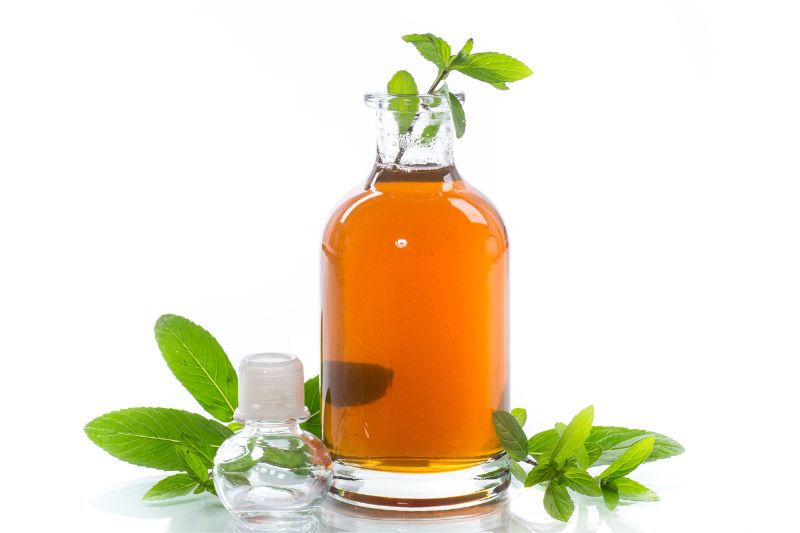
Discover this article in audio, in our podcast about mint, lemon balm and lavender syrups:
When, how and where to harvest mint?
Mint leaves can be harvested from spring until early autumn, from April to October. Picking is preferably done in the morning, as the foliage contains the most aroma before midday. Either pick a few leaves from several branches or simply whole stems.
→ Find out the different methods for preserving mint leaves in our article: "How to properly store mint?"
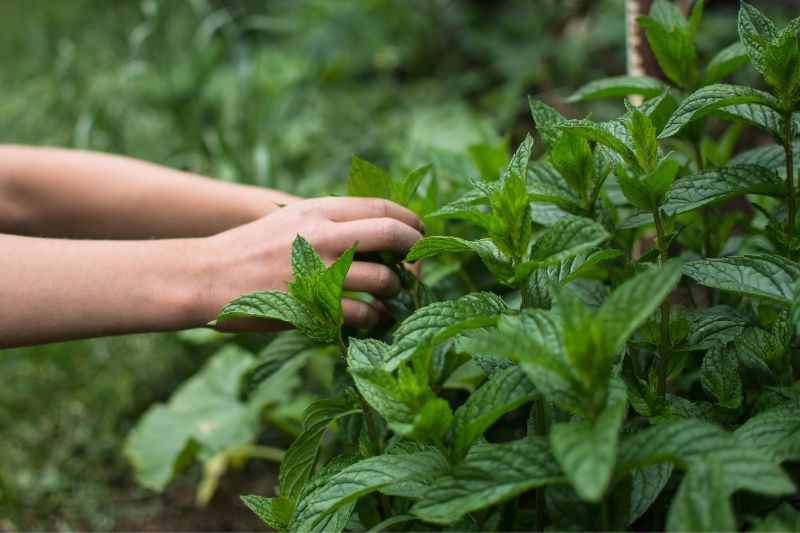
Which variety of mint to choose?
There are at least 18 species of mint which are the origin of numerous cross-breedings and varieties. Each cultivar has its own unique fragrance, sometimes with a slight citrus, apple, pineapple, lemon or chocolate note. Here are some highly appreciated ones for making your mint syrup:
- Peppermint is a variety with a very pronounced fragrance. It is used in cooking to flavour salads, grilled dishes, desserts, in syrup and infusions.
- Spearmint is also known as sweet mint. Its fresh and mild aroma flavours meats, infusions or beverages.
- Chocolate mint combines both the aroma of peppermint and a subtle chocolate fragrance. It is used in preparing infusions or to flavour hot chocolate and desserts.
- Moroccan mint diffuses a mild, slightly fruity fragrance, perfect for preparing the famous mint tea. Its delicate aroma is used to flavour grilled dishes, salads, sauces, ice creams and desserts.
- Lemon mint stands out with its pleasant lemony fragrance. Its refreshing scent is used to flavour both dishes and desserts, but especially teas and beverages.
→ Discover all our mint varieties.
→ Read our article about 6 must-have mints.
Homemade mint syrup recipe
Ingredients:
To make 30 cl of mint syrup, you will need:
- 50 to 60 g of fresh mint leaves, which is approximately 150 leaves (or 15 mint stems)
- 300 g of white sugar or cane sugar
- 30 cl of water
- Optional: half an organic lemon or 5 cl of lemon juice to improve preservation and limit colour oxidation
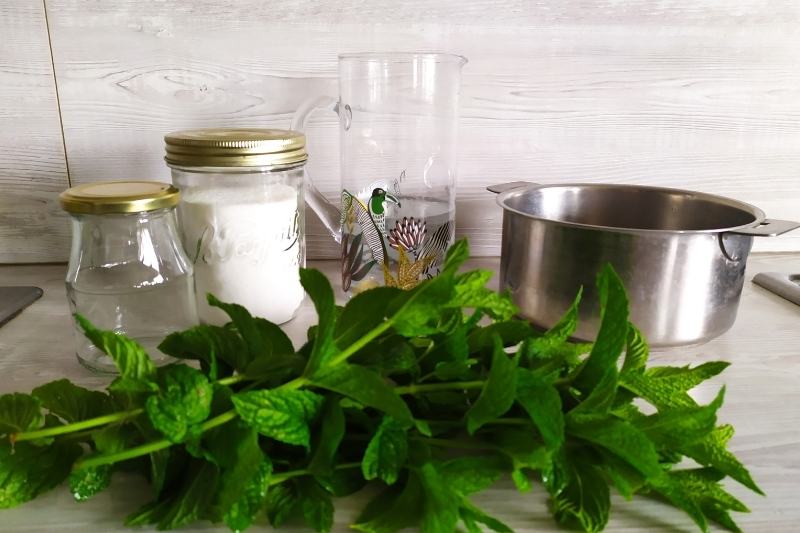
Recipe:
- 1/ Start by rinsing your leaves under cold tap water. This is even easier when they are still on the stems.
- 2/ Separate the stems from the leaves, then place the latter in a bowl or container.
- 3/ Pour the water into another saucepan and bring it to the boil.
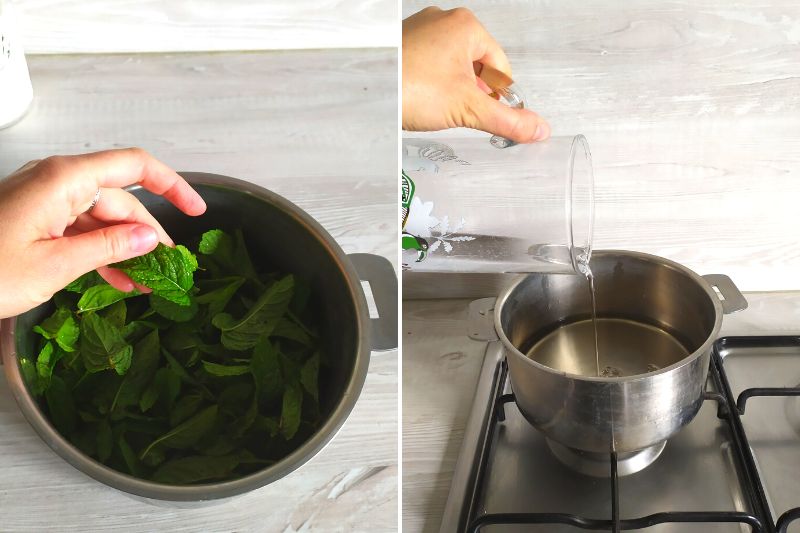
- 4/ Pour the boiling water over the mint leaves and optionally the lemon juice. Note that upon contact with hot water, the leaves will soften. Don't hesitate to push them under the water with a spoon.
- 5/ Let the leaves steep for at least 6 hours at room temperature, covering the bowl with cling film.
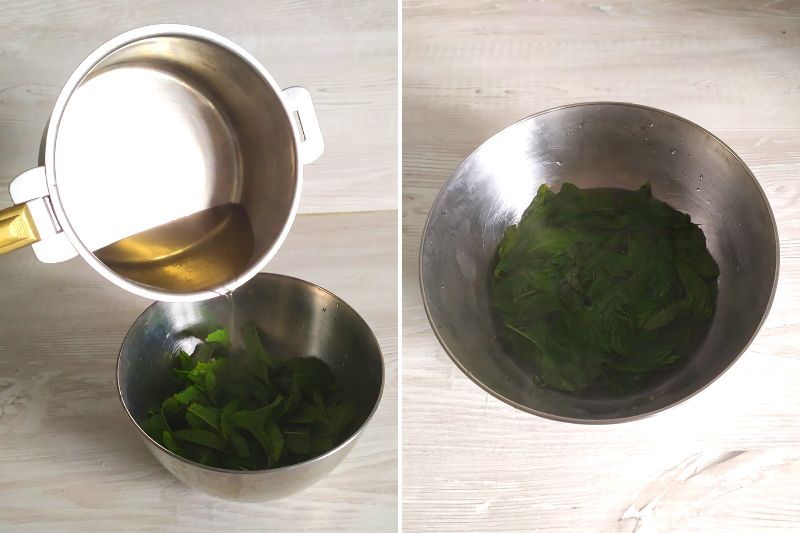
- 6/ Once the leaves have finished steeping, filter the preparation using a sieve to keep only the juice. Press the leaves well to extract all the steeping water.
- 7/ Pour the juice into a saucepan.
- 8/ Add the sugar.
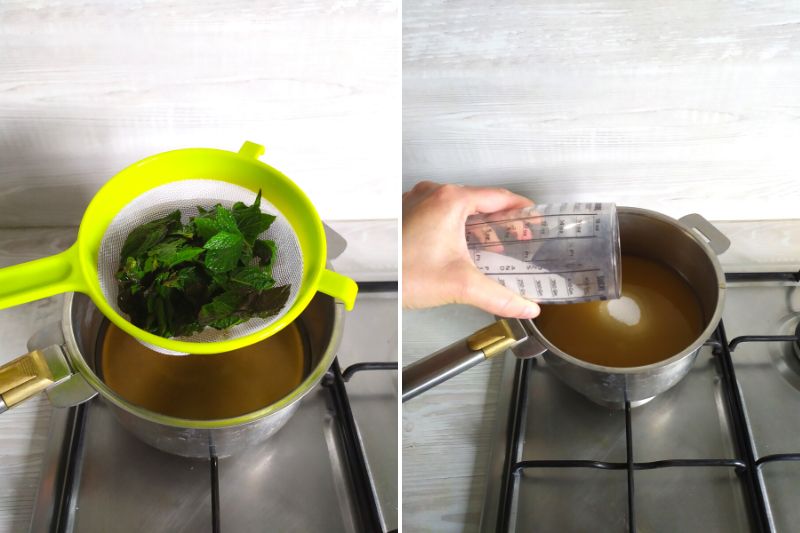
- 9/ Place the saucepan on low heat until it boils.
- 10/ Let the syrup cook for 10 minutes, stirring frequently with a wooden spoon.
- 11/ Without letting it cool, immediately pour your mint syrup into a sterilised bottle or jar.
Tip:
Homemade mint syrup has a caramel colour, far from the artificial green found in shops. To obtain a shade closer to green, you can add food colouring if desired.
How long does mint syrup keep?
Your mint syrup can be stored for 1 to 2 months before opening the bottle, then 15 days in the fridge once opened.
Recipe ideas:
Simply pour a little mint syrup into cold water, still or sparkling, with ice cubes. You can add a few fresh mint leaves as decoration. Mint syrup can also be used in cocktails, like the mojito to which you can add a few lime slices.

To go further:
- Discover all our mint varieties.
- Discover some beautiful mints in Olivier's video:

































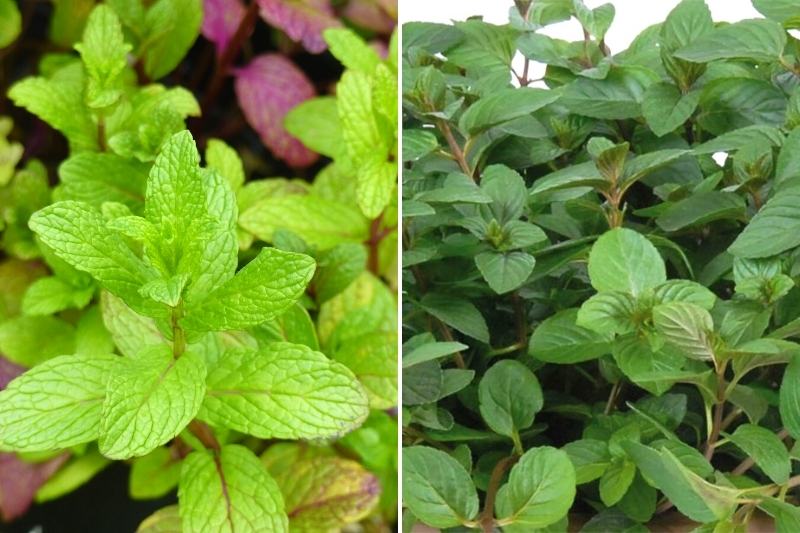
![[plant="Mint"] syrup recipe: a refreshing treat for summer! Enjoy the delicious taste of fresh mint in a homemade syrup. Perfect for cocktails, desserts, or simply drizzling over ice cream. [plant="Mint"] syrup recipe
If you have a {glossary} garden, you can easily make your own [product="syrup" plant="Mint"] at home. Here's a simple recipe to enjoy the refreshing taste of mint in your drinks:
Ingredients:
- 1 cup fresh {glossary="Mint"} leaves
- 1 cup water
- 1 cup sugar
Instructions:
1. In a saucepan, combine the water and sugar. Heat over medium heat until the sugar is completely dissolved.
2. Add the fresh {glossary="Mint"} leaves to the syrup mixture.
3. Simmer for about 10 minutes, stirring occasionally.
4. Remove from heat and let it cool completely.
5. Strain the syrup to remove the {glossary="Mint"} leaves.
6. Store the {glossary="Mint"} syrup in a clean bottle in the refrigerator.
Enjoy your homemade [product="Mint"] syrup in cocktails, lemonades, or even drizzled over desserts for a touch of freshness!](https://en.promessedefleurs.eu/blogwp/wp-content/uploads/2022/07/faire-du-sirop-de-menthe.jpg)
Comments